When the new prudential regime for investment firms comes into effect in January 2022, the impact of new requirements around capital, liquidity and reporting and other areas will be felt by different firms to varying degrees. One requirement that is likely to entail a lot of extra work and take some mastering, will be the annual Internal Capital Adequacy and Risk Assessment process (ICARA).
From January, the FCA will require all investment firms to complete the ICARA process. For some, the ICARA process replaces the Internal Capital Adequacy Assessment Process (the ICAAP) and the exercise will be one of adapting to the new framework in line with the FCA’s key principles. For others, and numbers are estimated to be around 1,000 investment firms that are currently exempt from the ICAAP, the whole process is a new undertaking. These firms will now have to undergo the task of establishing an ICARA process from scratch.
We have been working with clients for the past 12 months to assess the impact of the new regime and have published the results in a report. Read the full report here.
What is the ICARA?
The ICARA process encompasses various aspects of internal governance with a particular focus on risk management systems, processes and controls and a thorough assessment of the financial impact of potential risks compared to the financial resources available.
Key principles of the ICARA process
Before you can understand the ICARA process, you must consider the key principles. These are summarised as follows:
Consideration of risk
• Consider and account for:
o the risk of harm posed to consumers and markets
o risks to own safety and soundness
• Credible and accountable wind-down planning
Consistent and holistic risk management processes
• The ICARA process is the centrepiece, encompassing:
o identification, monitoring and mitigation of harms
o business model planning and forecasting; recovery and wind-down planning
o assessing the adequacy of financial resources
Senior management responsibility
The FCA will hold senior management and governing bodies responsible for ICARA process in line with the Senior Manager and Certification Regime (SMCR)
FCA intervention
The FCA has the power to intervene if FCA investment firms fail to act appropriately or their actions prove unsuccessful. Investment firms will have to notify the FCA if capital resources or liquid assets fall below intervention points.
Proportionality
The FCA expects investment firms’ processes to be proportionate to the level of harm posed. The FCA sets core rules and supporting guidance for firms to interpret and implement appropriately.
What is the Overall Financial Adequacy Rule (OFAR)?
Investment firms are expected to ensure they can remain viable, addressing any potential harm from ongoing activities, and ensuring they can wind-down in an orderly way.
To do this, investment firms will have to, as part of their ICARA process, establish their ‘own funds threshold requirement’ and their ‘liquid assets threshold requirement’, which effectively replaces any reference to ‘Pillar 2’ under the existing ICAAP regime. If firms can’t meet the requirements they should either deploy effective action or consider winding down.
Consolidated ICARA or standalone ICARA?
Investment firm groups which contain multiple investment firms can essentially choose whether to complete their ICARA process on a consolidated basis or standalone basis for each investment firm. The decision should be driven by the underlying risk management processes operated. In each case the individual investment firms must still comply with their individual capital and liquidity requirements as well as maintain their own wind-down arrangements.
How should the ICARA process work?
The ICARA process should be the centrepiece of a continuous risk management process, which should incorporate:
1. Business model assessment, planning and forecasting
• Forecasting capital and liquidity needs, both on an ongoing basis and in the event of winding-down.
• Essential understanding of vulnerabilities as a profit-generating operation. This helps to identify risks and conflicts of interest which have the potential to cause harm.
• Forward-looking planning and assessment of capital and liquidity are also integral to understanding how severe but plausible scenarios could affect a firms’ ability to maintain sufficient capital and liquidity resources.
2. Identification and monitoring harms
• Systems and controls to identify and monitor all material potential harm.
3. Harm mitigation
• Appropriate mitigants to minimise the likelihood or impact of the material harm.
4. Assessment of capital and liquidity requirements
• For harms not adequately mitigated through systems and controls, assess whether additional capital resources and/or liquid assets are required.
• Could apply where risk and unusual or potential impact is particularly severe or driven by an activity not covered by the K-Factor Own Funds Requirement.
• Firms should consider risks caused by the activities of the whole business, including activities regulated outside of MiFID and unregulated activities.
• Larger or more complex firms should also conduct reverse stress testing.
5. Recovery action planning
• Determine appropriate recovery actions to restore capital and/or liquid resources to avoid breaching threshold requirements.
• Develop appropriate early warning indicators to assist firms that might soon be in financial difficulty and set out credible actions to help reverse or repair any adverse trends.
6. Undertake wind down planning
• Wind-down plans should include timelines. Firms should consider different scenarios that could cause a need to wind down the business. These underlying drivers could result in the need for different resources (financial and non-financial) during the wind-down period.
• Consider the concepts of an ‘own funds wind-down trigger’ and a ‘liquid assets wind-down trigger’. Firms should ringfence resources so that sufficient capital and liquid assets are available at all times to enable an orderly wind-down. As a minimum, these will be the FOR and liquid assets requirement respectively, but a firm or the FCA may identify reasons for these triggers to be set at a higher level.
Own funds threshold requirement
Because the permanent minimum requirement (“PMR”), fixed overheads requirement (“FOR”) and K-factor requirement (“KFR”) may not be sufficient capital requirements to mitigate the risks that the firm faces or poses to its customers and markets, they should calculate their own fund threshold requirement. This will be driven by the higher of:
1. the capital resources needed to mitigate any residual risk (having considered the assessment of risks and the firm’s ability to mitigate them); and
2. the firm’s assessment of capital resources required in the event of an orderly wind down.
Once the own funds threshold requirement has been determined, firms must hold their capital resources in the same proportions as defined for the PMR, FOR and KFR.
Liquid assets threshold requirement
Firms will be required to calculate their liquid assets threshold requirement as part of their ICARA process. This is because the basic liquid assets requirement may not be sufficient in times of financial stress. The ‘liquid assets threshold requirement’ will be driven by the higher of:
1. the liquid assets needed at any given point in time to fund ongoing operations as well as to mitigate any adverse trends throughout the economic cycle; and
2. the firm’s assessment of liquid assets required in the event of an orderly wind down.
The FCA proposes that investment firms should assess their liquid assts needed to fund ongoing operations on a quarterly basis, to allow for the potential fluctuations in liquidity which may occur over a typical year. The ‘liquid assets threshold requirement’ should be set at the highest point determined by this quarterly split and firms are required to report projected liquid assets values for future quarters.
Once the ‘liquid assets threshold requirement’ has been determined, firms must hold their liquid assets in accordance with the same haircuts and limits as was applied in determining the basic liquid assets requirement.
Interacting with the FCA
The FCA has provided some guidance around when it would expect firms to proactively make a notification and those which might warrant FCA intervention. These are more defined than the ICAAP regime and include:
1. Early warning indicator – if an investment firm’s capital resources fall below 110% of the ‘own funds threshold requirement’ it must notify the FCA laying out its recovery plans to restore back to a healthy surplus
2. Threshold requirement breach – if an investment firm breaches its ‘own funds threshold requirement’ or ‘liquid assets threshold requirement’ it must notify the FCA laying out its recovery plans or decision to wind down, as appropriate
3. Wind-down trigger – if an investment firm breaches is ‘wind-down trigger’ it must notify the FCA of its decision to wind down, unless the governing body of the firm presents a determination of an imminent and credible likelihood of recovery.
Supervisory Review and Evaluation Process
The FCA’s use of its Supervisory Review and Evaluation Process (SREP) may change, as it moves away from a minimum SREP cycle in favour of a more thematic or targeted approach, supported by enriched data collection. The FCA may take its own view of a firm’s ‘own funds threshold requirement’ or ‘own funds liquid assets requirement’, ask a firm to enhance its risk management processes, reassess its funding profile or require improvements to a firm’s wind-down plan.
Final word
Exempt-CAD firms, and those other firm types, which don’t currently fall within the ICAAP regime, will have their work cut out and senior management should work ahead of time to establish the necessary processes if they are not already being operated. This will allow for a more seamless review, documentation and reporting exercise when the new rules are live.
The team at Wheelhouse Advisors is on hand to provide support with the ICARA process ahead of the January 2022 deadline. Contact us to talk to an expert.

